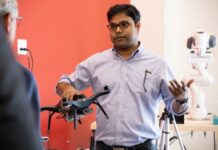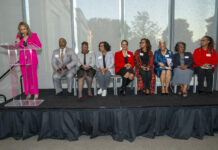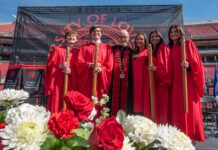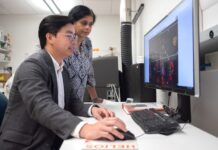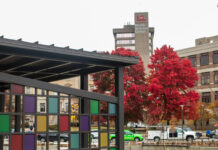The exhibit includes reproductions of some 250 historic photographs and documents that examine the rationale, means and impact of a lesser-known aspect of the Holocaust ─ the Nazi regime’s attempt to eradicate homosexuality.
Leaders from Louisville’s Jewish and LGBT communities have been invited to speak at the opening reception, Wednesday, Sept. 21, at 7 p.m. It will be in the first-floor silent study room of Ekstrom Library.
LGBT Services Director Brian Buford explains why his office and others are bringing the exhibit to campus)
I started working on this dream with Toccara Porter in Ekstrom Library shortly after the LGBT Office opened in 2008. As it turned out, bringing a traveling museum exhibit to campus was harder than I thought it would be!
But I just had this strong sense that it’s an important part of our shared history that we don’t talk about enough. Most people know that Hitler targeted the Jewish community and have learned something about the Holocaust, either in school or through films or whatever. But not many people, even in the LGBT community, realize that others were targeted as well, and that the story includes us, too. And people with disabilities, and gypsies and the mentally ill.
I thought it was important to bring the exhibit here because it teaches us an important lesson about oppression, about the nature of intolerance. It’s what Dr. Martin Luther King said, Injustice anywhere is a threat to justice everywhere.
People who hate one group of people usually don’t confine their bigotry to just that group. It spreads, and before you know it, everyone who is different is a target. Dr. King suggested the answer, as well, I think: If you want to make things better for your group, you have to work to end injustice everywhere.
There’s a beautiful statement attributed to pastor Martin Niemoller that says:
First they came for the communists,
and I didn’t speak out because I wasn’t a communist.
Then they came for the trade unionists,
and I didn’t speak out because I wasn’t a trade unionist.
Then they came for the Jews,
and I didn’t speak out because I wasn’t a Jew.
Then they came for me
and there was no one left to speak out for me.
In the LGBT Office, that’s an important principle we try to reinforce in all of our programs and efforts ─ the idea that we must look beyond our own personal fight and join others who are also oppressed.
If we want people to care about homophobia and anti-gay bullying, we have to realize that it’s all connected. And I tell you, this generation of students really gets it in a way that makes me so proud. They are marching for the poor, working to end racism, standing up for one another.
Hopefully this exhibit will remind them and affirm that they are doing the right thing.
(Richard Grune, whose Solidarity is shown on this page, was prosecuted under Paragraph 175 and from 1937 until liberation in 1945 was incarcerated in concentration camps. In 1947 he produced a series of etchings detailing what he witnessed in the camps. Grune died in 1983. The image used above is courtesy of Schwules Museum, Berlin.)







